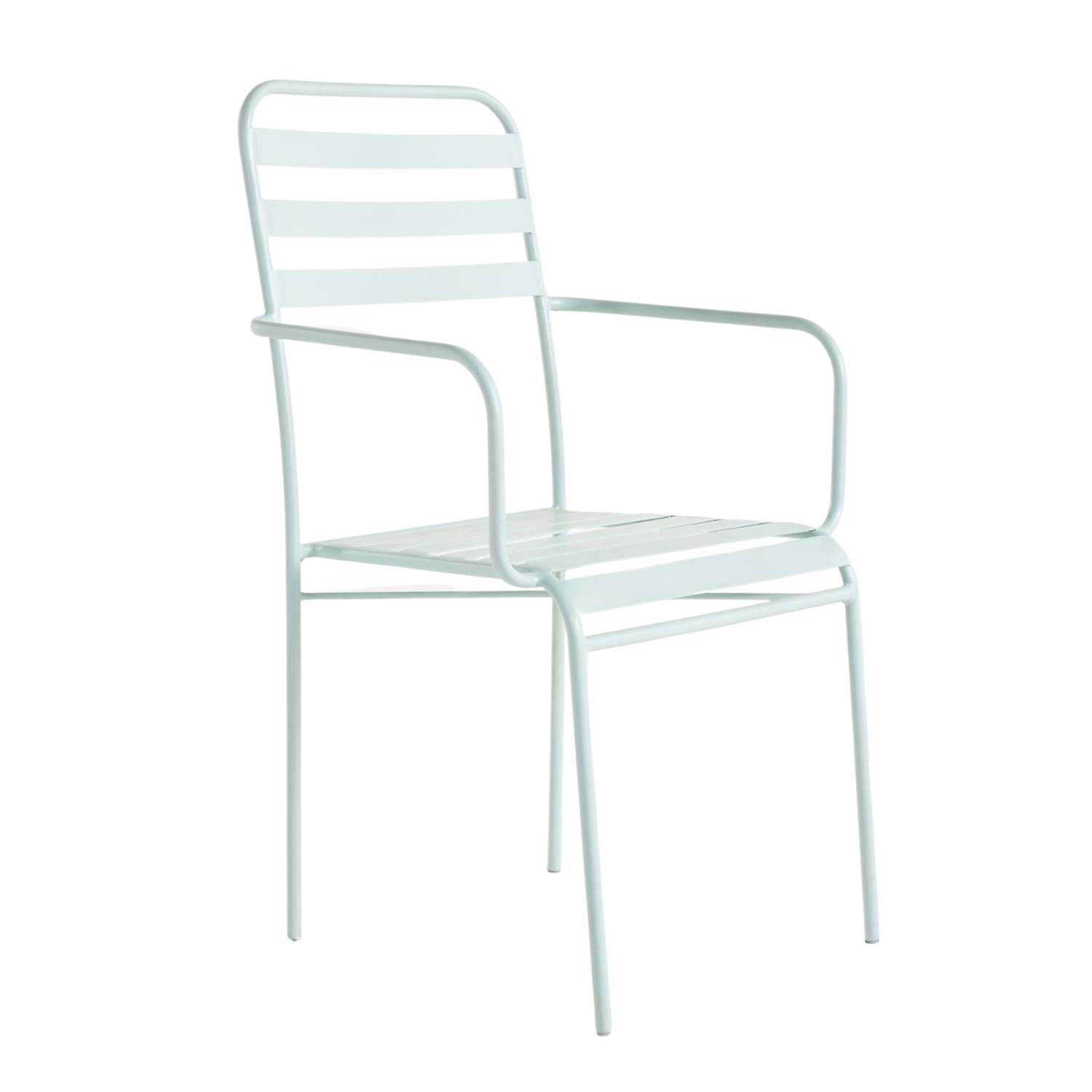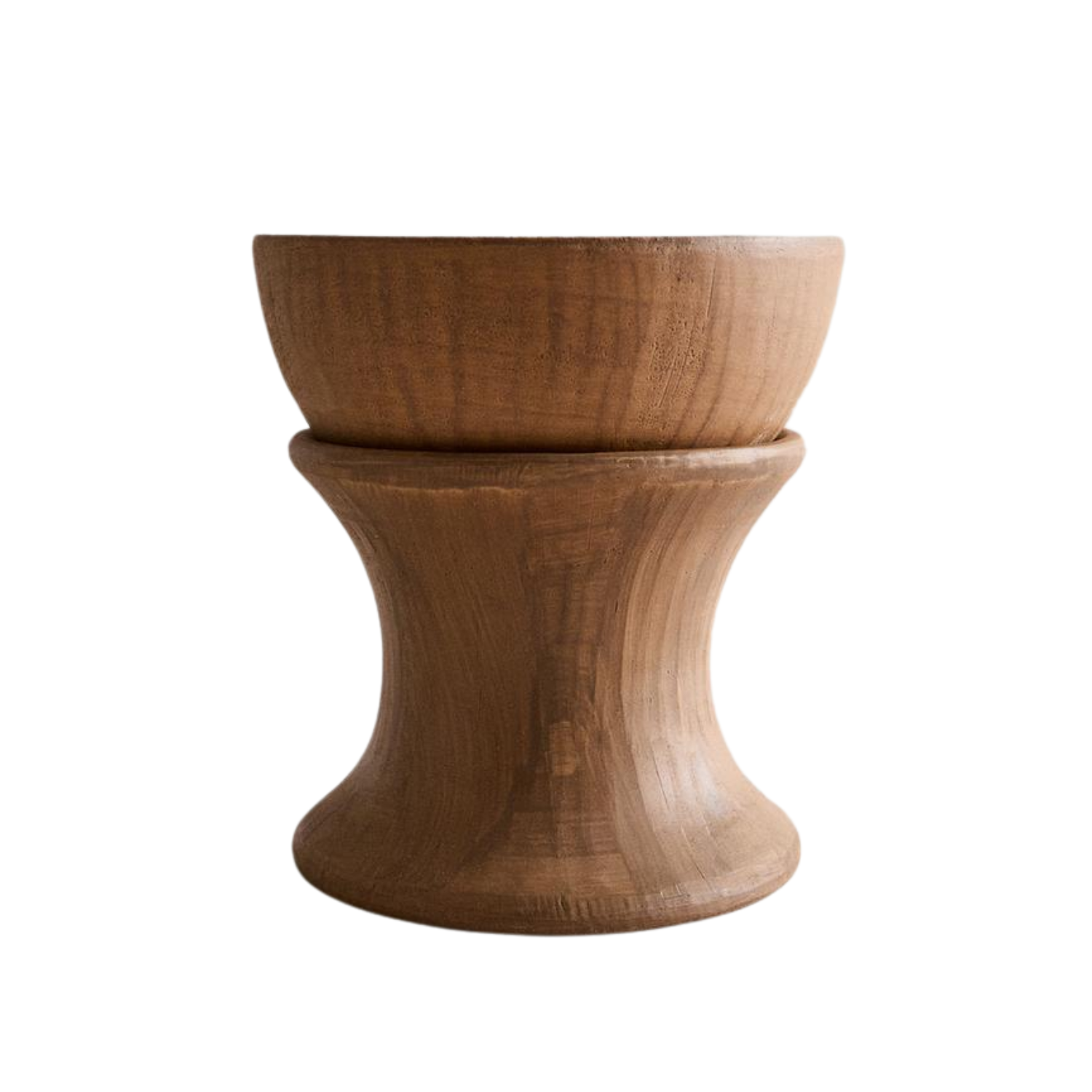7 Greek Garden Ideas to Transform Your Backyard Into an Enchanting Haven — From an Award-Winning Garden Designer with Greek Heritage
Beyond just white and blue accents and olive trees...
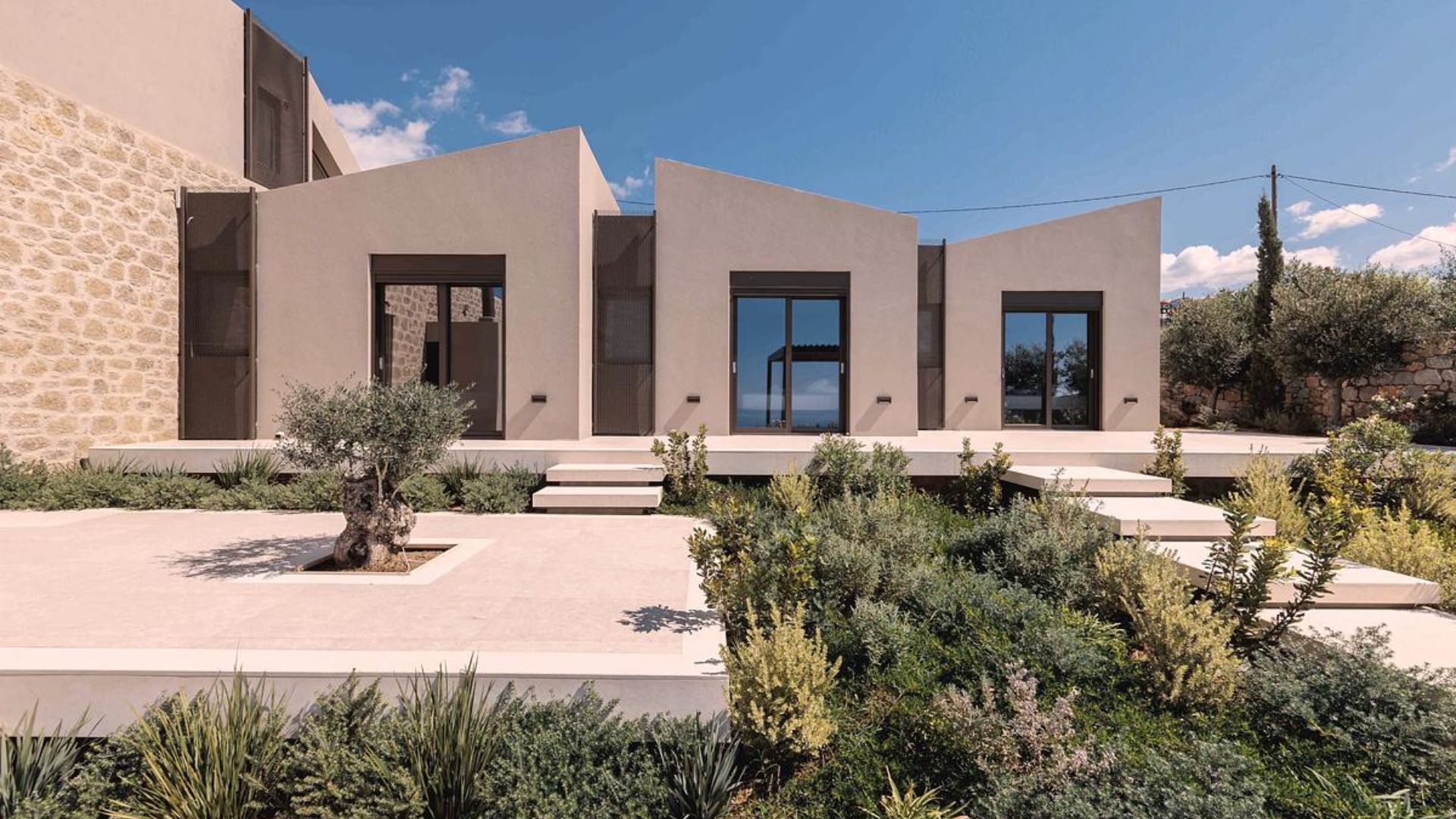

Steeped in architectural romance, draped in feathered green foliage, and complete with grounding earthen design features, Greek gardens are incredibly stunning and worth lounging in on vacation. But who's to say you can't return with inspiration to spruce up your own garden?
I can't imagine a more fitting summer transformation for a backyard. But if you're going to commit to this idyllic outdoor aesthetic, then you'll need to really dive into the Grecian subsect of Mediterranean gardens. And, of course, go beyond just olive trees and hues of white and blue.
To help you make your dreams of a Greek-inspired garden sprout to life, let's hear from an expert who is native to the Balkan country for an authentically designed space.
1. Symmetry in Design

Symmetrical styling automatically reveals a put-together space.
"One of the defining features of a Greek garden is its quiet sense of order," says garden designer Katerina Kantalis. "There’s something deeply soothing about the symmetry you’ll often find in these spaces — paths that mirror each other, focal points that draw your eye and invite you to pause. It’s not just about being neat, it’s about creating a sense of calm and flow."
In a modern garden, symmetry can come across as an outdated garden layout. However, set against the backdrop of a Greek-inspired space, it balances the space in a way that feels artistically apt.
"Think of a garden where gravel paths or tiled walkways lead you gently through the space, guiding you toward a seating area, a shady olive tree, or perhaps a tranquil pool or water feature. These sightlines are designed to encourage slow movement and quiet exploration," she notes.
"For architectural emphasis, consider an archway, a timeless symbol in Greek design. Positioned along a central path, an arch adds height, symmetry, and a sense of journey by framing views beyond. It can change the whole dynamic of a space and give the garden a sense of purpose and destination."
The Livingetc newsletters are your inside source for what’s shaping interiors now - and what’s next. Discover trend forecasts, smart style ideas, and curated shopping inspiration that brings design to life. Subscribe today and stay ahead of the curve.

Katerina is a multi-award-winning garden designer, including an RHS Gold medal, renowned for creating stunning, immersive outdoor spaces that are uniquely tailored to each client. Deeply influenced by her Australian upbringing and Greek heritage, Katerina specialises in ecological sustainability and climate resilience, focusing on carefully selected materials, permeable surfaces, and planting that supports biodiversity.
2. Neutral Colors and Vibrant Accents
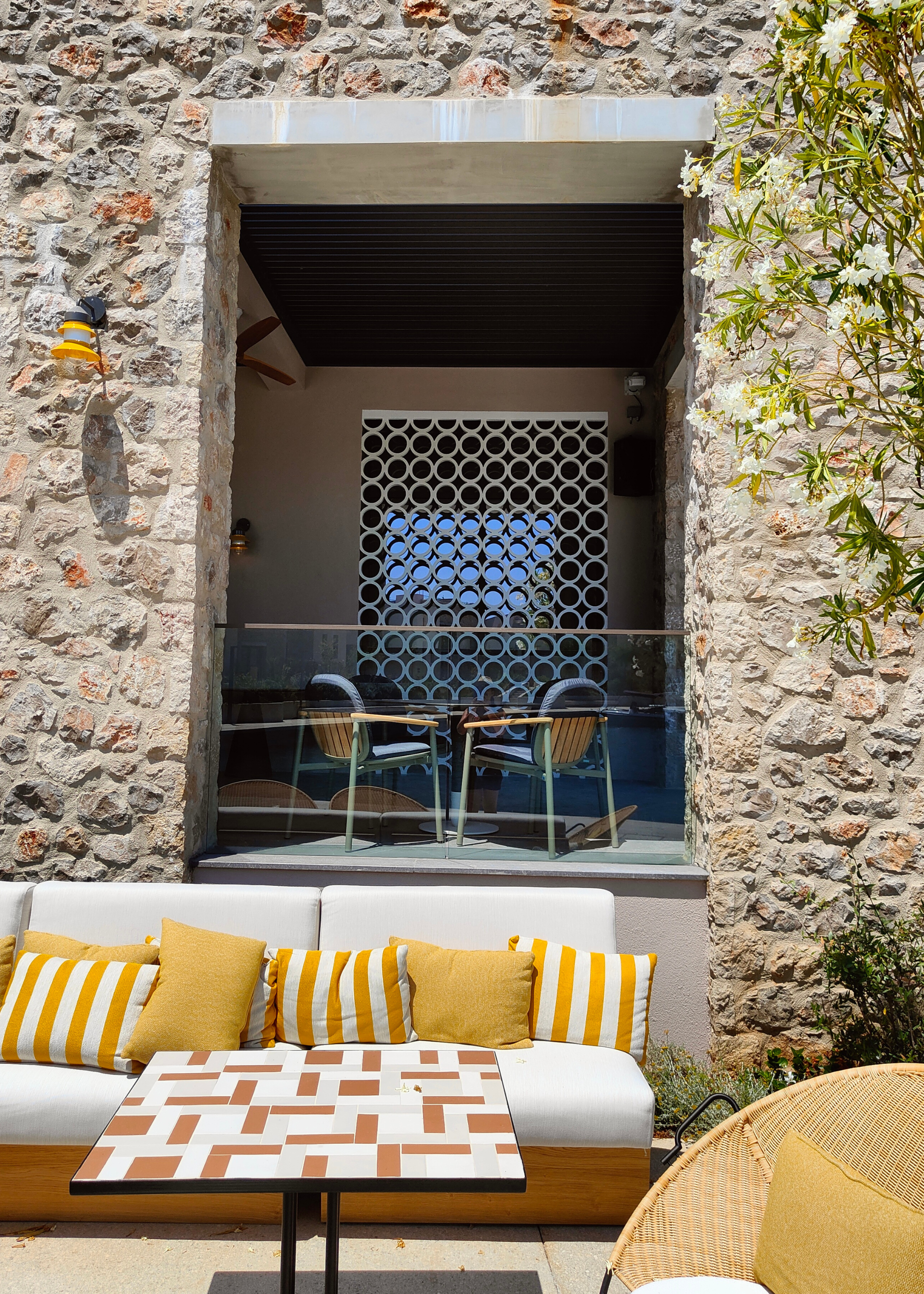
A lick of vibrance amidst a sea of neutrals is the way to go.
When you step into a Greek garden, Katerina tells me that one of the first things you’ll notice is the light and the way it dances against all of your al fresco elements. "Notice how it bounces softly off pale walls, how it plays across gravel paths, and how everything seems to glow in the sun without ever feeling harsh," she notes.
"In Greece, a neutral palette isn’t just a design choice, but practical too. Shades like white, cream, pale grey, and soft beige help reflect sunlight, keeping homes and gardens cooler during those long, hot summers. These gentle hues also act as a calming backdrop, allowing natural textures and plants to shine. The result? A garden that feels airy, grounded, and completely at ease with its surroundings."
And while she recommends staying understated with the base of your garden color palette, Katerina reassures that color isn’t off the table. Rather, it's implemented intentionally for vibrance that feels completely in place.
"You might spot a splash of Mediterranean blue on a shutter, a pop of terracotta in a weathered pot, or a hint of green in painted furniture. These accents are never overwhelming, they’re there to add character and contrast without stealing the spotlight," she says.
"This kind of restrained colour use is part of what makes Greek gardens feel so timeless. They don’t rely on trends or overly coordinated schemes. Instead, they lean into the natural tones of the landscape, letting light, texture, and the occasional bold detail do the heavy lifting."
Also, it seems that Greek gardens have been ahead of the curve this whole time, as 2025's rich teal garden color of the year has been an underlying feature in these inspired spaces all along.
I find Graham & Brown's Kasbah Blue to be the perfect pop, but if you're looking for something striking but subtle, you can't go wrong with Lick's Blue 08 Paint.
3. Textural Layering Through Nature

Use curated foliage for a vignette of textural beauty.
According to Katerina, in Greek-style gardens, texture isn’t an afterthought, instead, it’s woven into every surface. "Walk through a Greek garden, and you’ll notice how the gravel crunches gently underfoot, how the rough stone walls hold the warmth of the sun, and terracotta pots are overflowing with greenery," she says.
"Nature adds its own textures. Olive trees, with their leathery, silver-green leaves and gnarled bark, are not just drought-tolerant, they’re full of character. Their bark catches the light differently throughout the day, giving the garden a subtle shimmer that changes with the sun. Other trees, like pomegranates, pines, and cypresses, bring their own quiet drama and atmosphere, thanks in part to their rugged, tactile presence."
She also recommends introducing texture through fragrant herbs like lavender, thyme, rosemary, and jasmine. "These plants do double duty, adding both scent and soft, fine-textured foliage that begs to be brushed as you pass," she says.
"All of this creates a layered experience. Texture draws you in visually, but it also connects you to the garden in a physical way. It reminds you to look a little closer, to pause for a moment, and to simply enjoy being in the space."
And if you're questioning the importance of textural layering, even a momentary glance through the Greek outpost of Casa Cook Hotel will put any of your doubts to rest.
4. Limestone and Gravel Hardscaping
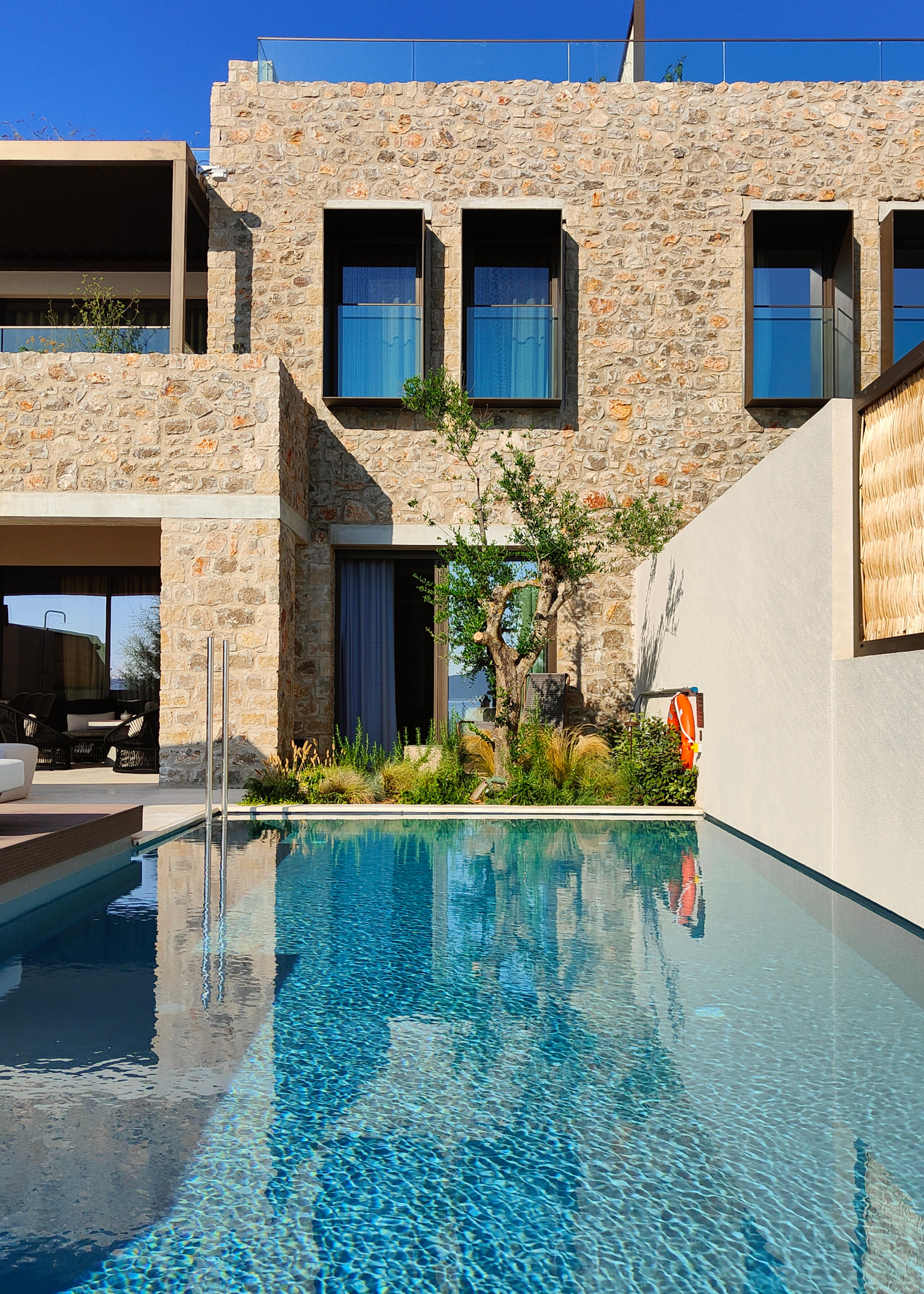
Fall back on classic Greek materials for an authentic backdrop.
When it comes to designing a Greek garden, Katerina explains that the materials underfoot are just as important as the plants. She tells me that limestone, gravel, and dry stone walls effortlessly beautify and sustainably, too.
"With its soft, sun-warmed tones, limestone blends effortlessly into the Mediterranean landscape," she says. "It reflects light without glare, keeping the space feeling bright and open while also helping to cool it down, which is a welcome bonus in hot, dry climates."
Additionally, she points out that it's naturally permeable, durable, and low-maintenance. "It helps regulate temperature, supports water management, and stands up to the elements for decades with very little fuss," she adds. And beyond Grecian backyards, it just so happens that limestone paving is a leading garden trend at the moment.
"Then there’s gravel. One of the hardest-working elements in any drought-friendly garden. It lets rainwater seep through to replenish groundwater, rather than running off and washing precious nutrients away," she explains.
"It also keeps moisture in the soil, helps prevent weeds, and moderates ground temperature, protecting plant roots from extremes. Together, stone and gravel create a solid foundation, both literally and visually. And because they don’t decompose or need replacing, they’re perfect for gardeners who want low-maintenance hardscaping materials that won’t cost the earth."
5. Earthen Planting Mediums
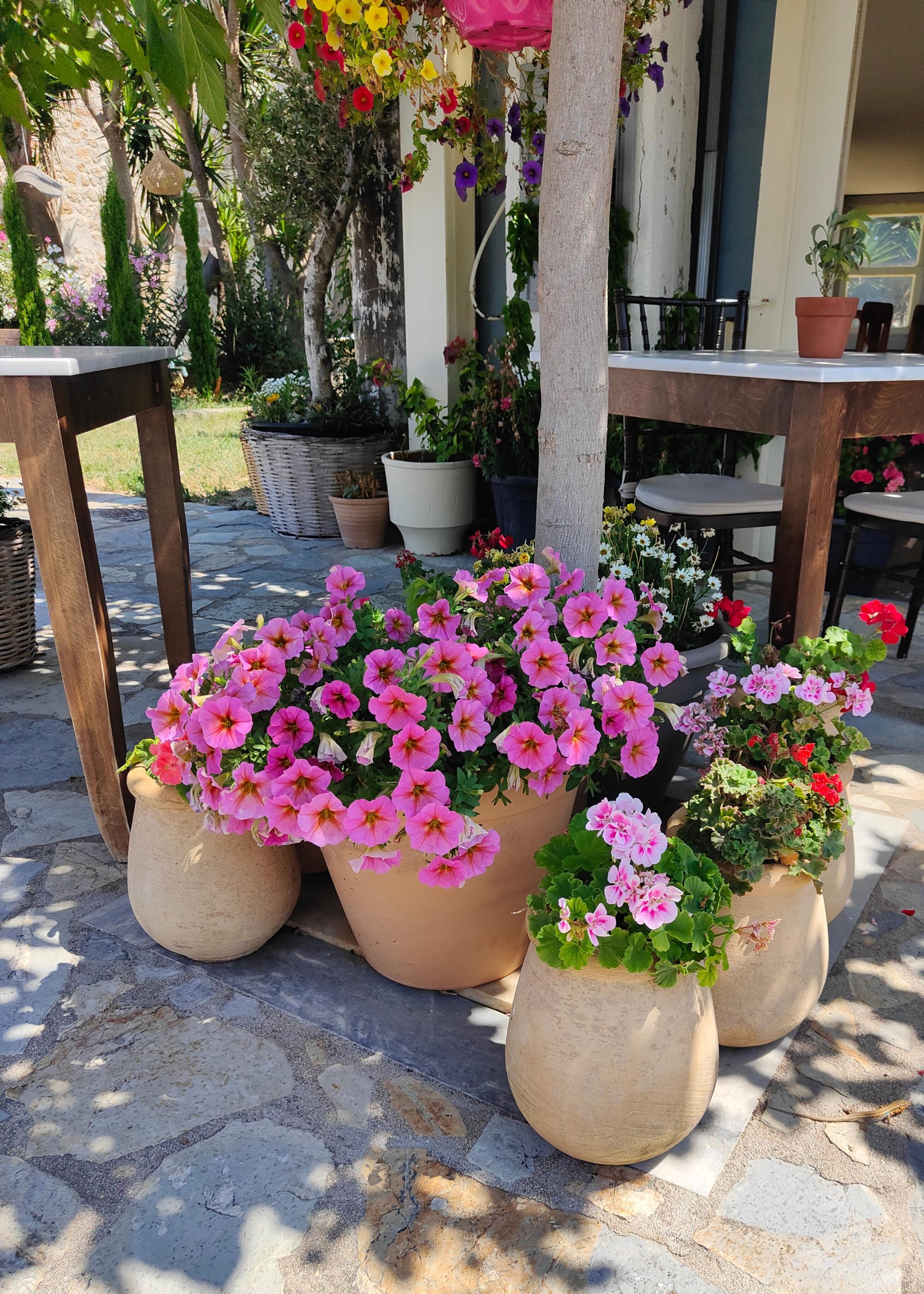
Porous, eco-friendly, and naturally charming.
"In many Greek villages, space is a luxury," says Katerina. "Not everyone has a garden, but that’s never stopped anyone from surrounding themselves with plants. The solution? Lots and lots of pots."
Whether they are clustered on doorsteps, lining stairways, perched on windowsills, or even spilling out onto the street, she tells me that container gardening is a great way to manifest this vision in a small garden.
"It’s a wonderfully informal way of greening a space, and it speaks to a kind of gardening that’s both creative and deeply rooted in tradition. For which, terracotta is the classic choice," she advises.
"Think weathered clay pots bursting with Mediterranean garden plants like pelargoniums, lavender, rosemary, thyme, and oregano. These containers don’t just hold plants, they also hold scent, colour, and character. Grouped at different heights, they create instant charm and structure, especially in paved or compact spaces where planting in the ground isn’t possible."
And while this approach feels inherently Grecian, Katerina explains that it’s surprisingly practical elsewhere, too. "In cooler climates like the UK, outdoor planters make it easier to overwinter tender plants. You can move them into shelter when frost hits or rearrange them with the seasons to keep your space feeling fresh," she says.
6. Drought-Tolerant Plants, Low-Lying Ground Cover, and Short Trees

Finding a happy medium between Greek-inspired greenery and local planting is key.
If you've ever wondered how Greek gardens somehow seem to thrive, even in tough conditions, Katerina explains that much of that comes down to smart, climate-adapted planting. She finds that this is especially prevalent in the use of drought-tolerant plants and low-lying ground covers that don’t just survive dry spells, but actually flourish in them.
"Many classic Mediterranean plants, like rosemary, thyme, lavender, and sage, are built for heat and scarcity," she says. "And the other thing to note is that Greek planting tends to be dominated by low-growing ground covers, bringing a softness to the landscape."
Katerina also tells me that one of the more subtle, and often overlooked, characteristics of Greek gardens is the use of dwarf trees. "Unlike the towering canopies found in more temperate regions, Greek landscapes favour small to medium-height trees, like olives, figs, or pomegranates," she says.
"There’s a practical reason for this. In hot, arid climates, dense overhead shade can trap heat and reduce air circulation. Shorter trees offer just enough dappled shade to protect plants and people from intense midday sun, without blocking breezes or light. Their smaller size also means less demand on water and nutrients, which is key in regions where both can be scarce."
7. Aquatic Accents
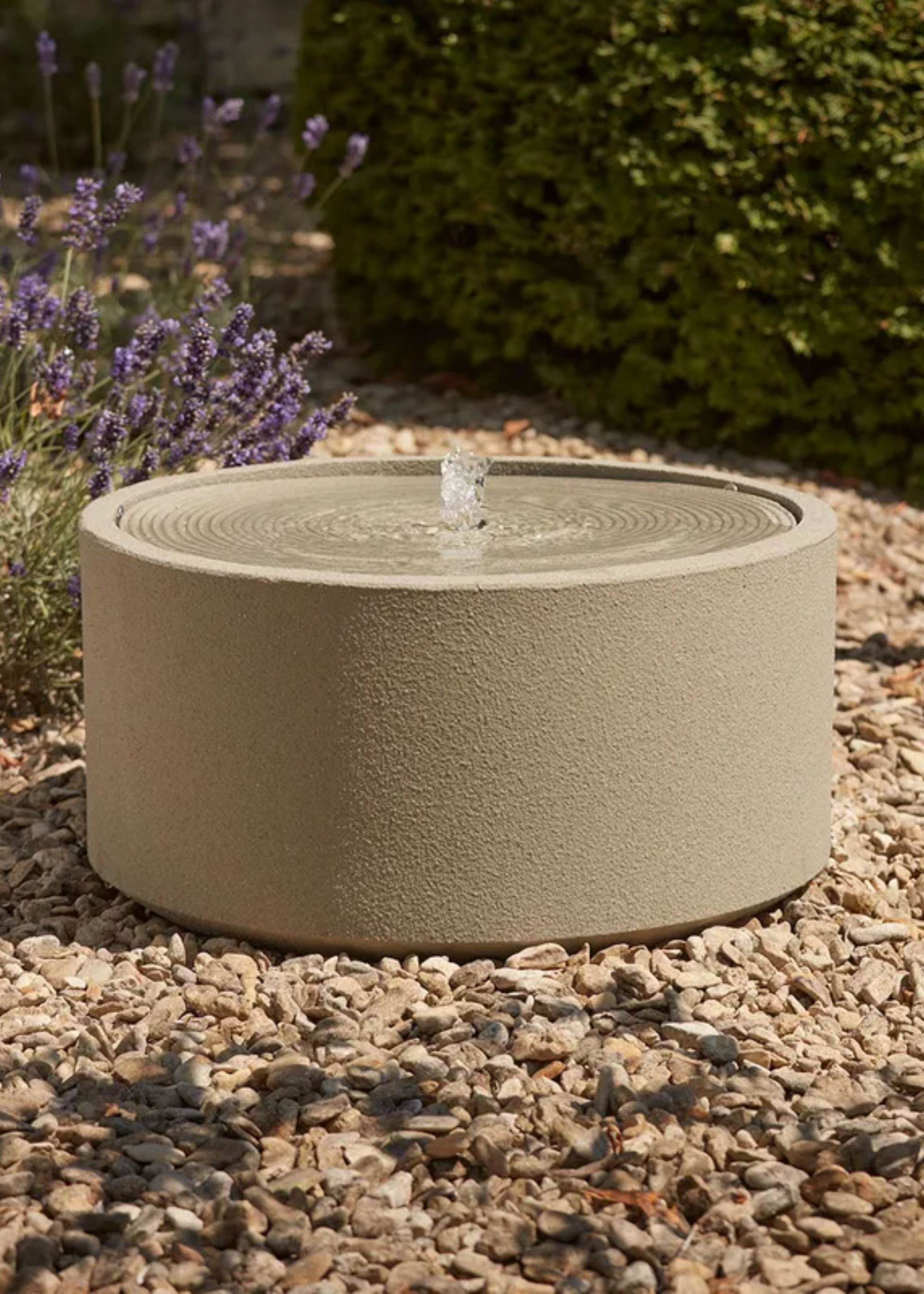
A trickling water feature is the perfect finishing touch to a Grecian backyard.
Lastly, Katerina spotlights aquatic accents as a key element in creating the ambiance of a tranquil Grecian vista. And you don't have to go overboard with a full-fledged water garden either.
"Unlike Italian gardens, where dramatic fountains often take centre stage, think cascading tiers and bold sculptures. Especially since Greek gardens tend to take a more understated approach," she says.
"Here, a single-spout fountain, a simple trickling vessel, or a modest stone basin brings a sense of peace without drawing too much attention. The sound of gently flowing water adds a natural cooling effect, both physically and emotionally, especially welcome on hot summer days."
FAQs
What's the Difference Between Greek and Roman Gardens?
At first glance, Greek and Italian gardens may seem alike, but Katerina tells me that there are differences to pick up on, for those who look close enough.
"Italian gardens are dramatic and formal. Picture sculpted hedges, ornate fountains, and elegant terraces. These spaces are designed to impress, often as an extension of a villa. They also often host water features that are grand and theatrical, showcasing control and symmetry," she says.
"Greek gardens, on the other hand, are simpler and more rustic. They’re about living well rather than making a statement. Materials are modest in the form of terracotta pots, gravel paths, and rough stone. And water accents tend to be understated, often just a quiet trickle from an urn or wall fountain."
Design-wise, she notes that Italian gardens shape the land with terraces and formal layouts, while Greek gardens work with the land, following natural contours, using low walls, and embracing a more organic, textured planting style.
In case your love for this Mediterranean subsect of style is pleading to fashion the inside of your home as well, Greek chic interiors are the way to go.

Amiya is a Home Wellness Writer at Livingetc. She recently graduated with a Masters Degree in Magazine Journalism from City, University of London, and has lent her words to beauty, fashion, and health sections of lifestyle publications including Harper’s Bazaar and Women’s Health. Her experience as a research analyst has equipped her with an eye for emerging trends. When she’s off the clock, she can be found reading, listening to music, or overanalyzing her latest Co-Star update.
